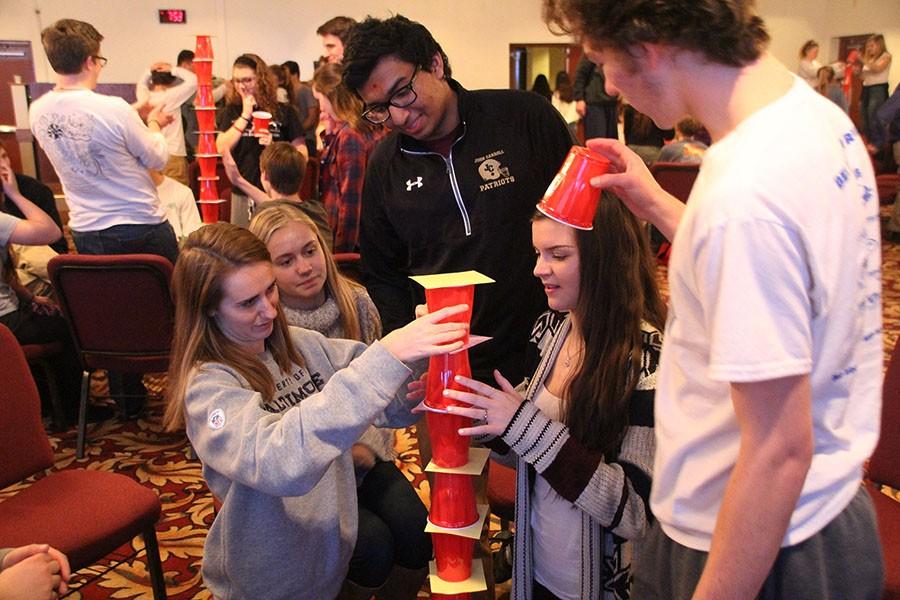Patriot Perspective: Cliques must be combated through better class unity
Seniors Cara Wolfarth, Kristen Isoldi, Kishan Patel, Jessica Fuchsluger, and Matthew Becker (left to right) bond over a tower-building challenge at retreat.
As a community that prides itself on being a family, we must be committed to creating and maintaining an inclusive social atmosphere that welcomes all in the school. That being said, in order to create a family, both on the individual class scale as well as the school-wide scale, we have to make a change to combat the formation of cliques the first day.
“From the first day of freshman year, your friend groups were decided, and it hasn’t changed, which is crazy,” junior Beth Sapitowicz said. Sapitowicz admits that she too would be friends with people from her middle school if they all went to the same high school, but she believes that it has created divisions.
This year, freshman retreat took place in the summer and allowed for four groups of incoming freshmen to meet new people and interact with their classmates.
This is a good approach to eliminating the fear of coming in as a freshman and knowing nobody, but the problem was that students were allowed to sign up for the day of their choice. This allowed students from the same middle school to sign up the same day as their friends. These groups set up factions.
Students left out of these factions proceed to form cliques of their own. International students are a prime example of separation at JC. These students stick together in a similar environment. Another clique.
To break down this cultural and language barrier, there needs to be more cultural appreciation and understanding. One solution is a cultural exposure fair during one of the community blocks. Volunteers could run stations in separate classrooms with food, music, videos, and other things that represent the culture, and advisories could walk around together and visit different stations.
This pattern does not have to be the rule, however. Last year, several football players participated in the fall theater production of “High School Musical.” Crossovers such as this allow new friendships to be made and cliques to be diversified.
Students also have to resolve this issue. The solution on an individual student basis is simple: mirror the High School Musical football players and branch out from what you are used to.
In order to allow for this to occur, teachers and coaches need to be more understanding of time commitments. A lacrosse player can’t participate in Chemathon or Academic Team if his coach requires them to be out on the field by 2:55 p.m. rather than at 3:30 p.m. when sports practices are supposed to start.
Fewer time restrictions for activities would allow for more social crossover, and the great by-product of social crossover, other than a successful production, is that it is a much more accurate preparation for the “real world.”
The next step of the real world is college. In college and beyond, people are surrounded with diversity. Once students leave high school, their social environment may change completely.
To create the social environment JC already has advisories. Advisories are a great way of helping to disband cliques because they cross every social boundary. More extended advisory blocks would allow for groups of advisories to interact and play Kan Jam, basketball, or maybe just hang out with some food.
Senior year has more opportunities for class bonding than any other, which is sort of ironic. Senior Unity Day, Senior Field Day, Senior Retreat, and the Variety Show all create a strong bond between the seniors. Although this is great, JC should not wait until months before graduation to actively promote class unity.
The burden does not lay solely on the faculty and staff. Diversifying cliques requires students to take the initiative to create opportunities. Students must take a chance and sit with new kids during lunch. Students must take a chance and invite an outlier to a party. Students must lead the charge in eradicating cliques, including one another, and creating a welcoming social atmosphere.



